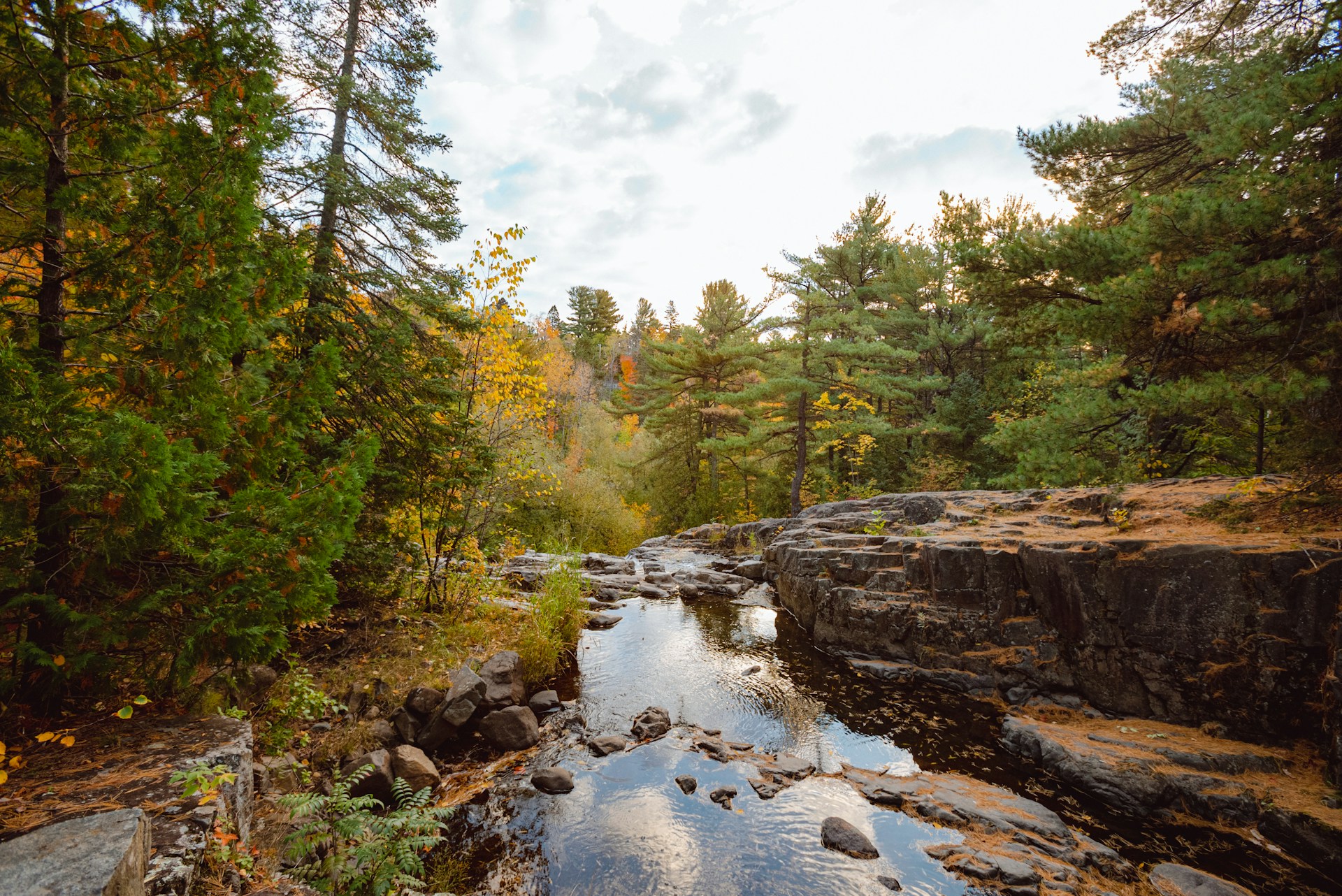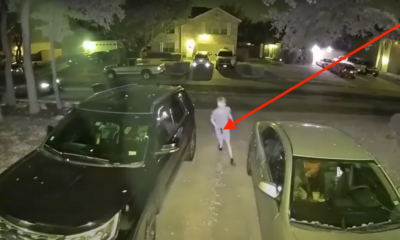Preparedness
Homeowner Defends Against Intruder in Quiet Las Vegas Neighborhood

A Las Vegas homeowner found himself in a life-threatening situation early Thursday morning when a male suspect began breaking windows and attempting to enter his residence. This incident has left the usually tranquil neighborhood near Torrey Pines Drive and Flamingo Drive in shock.
Jennifer Sauberan, a long-time resident, expressed her disbelief to KLAS-TV.
“I was shocked,” she said.
“Because it’s a very quiet neighborhood.”
Sauberan reflected on how close she might have come to being a victim herself.
“I was just thinking, ‘Oh, my God, what if I hadn’t come back the night before?’” she wondered.
“It could have been my house.”
Having lived in the area for decades without any concerns, Sauberan now feels a heightened sense of vulnerability.
“It was so unexpected,” she remarked.
“We never have anything ever happen in this neighborhood, ever.”
The homeowner, whose name has not been released, called 911 around 7:40 a.m. to report a strange male breaking windows and attempting to gain entry into his home, according to Las Vegas Metropolitan Police Homicide Lieutenant Jason Johansson.
“The man was not listening to what they were telling him,” Johansson stated.
“He was acting extremely irrational as they continued to tell him to leave the property.”
When the suspect moved toward the front door, the homeowner made the decision to shoot. The suspect was found in the driveway by officers and later died at the hospital.
Johansson mentioned that there are “self-defense” elements involved in this case, and he does not expect the homeowner to face charges. However, the final decision will be made by the Clark County District Attorney.
Anyone with additional information is encouraged to contact the LVMPD Homicide Section by phone at 702-828-3521 or via email at [email protected]. For those wishing to remain anonymous, Crime Stoppers can be reached at 702-385-5555 or online.
In response to the incident, Sauberan has taken further steps to secure her home.
“I have cameras around my house now,” she shared.
“I put them up more recently, but then I put in flood lights and stuff because [criminal activity] makes me a little bit nervous sometimes.”
This event has undoubtedly shaken a community that prides itself on its peaceful environment, reminding residents of the importance of preparedness and vigilance.
Watch a local news report about the incident below:
Let us know what you think, please share your thoughts in the comments below.

Preparedness
Ignite the Impossible: Fire-Making Secrets for Rainy Adventures

Mastering the art of fire-making is essential for any outdoor enthusiast, but doing so in the rain requires an elevated skill set. Whether you’re an avid camper or hiker, knowing how to ignite a fire in wet conditions can be crucial. In dire situations, a fire can mean the difference between life and death, offering warmth and the ability to cook food.
The first step in starting a fire in the rain is to gather tinder. Pine needles are an excellent choice because they dry quickly. Alternatively, you can use tree bark, as it often has a dry side. It’s wise to carry your own firestarter for emergencies, but if you find yourself without one, these natural options can be lifesavers.
Next, seek out kindling and fuel wood. Search for dry wood in areas with natural cover, such as beneath a leaning rock, a fallen tree, or the lower branches of an evergreen. To ensure the wood is dry enough, test the kindling by snapping it; it should break easily. For larger branches, split them with a knife to access the dry wood inside.
Once your materials are collected, choose a location for your fire. Underneath a large tree is a good option, or you can create a makeshift shelter by stringing a tarp between trees. This will help shield your fire from the rain.
Creating a bed for your fire is essential to keep it off the wet ground. You can use tree bark or construct a bed from branches. This separation is crucial to prevent moisture from extinguishing your fire.
In wet weather, avoid digging a fire pit, as it can fill with water. Instead, build your fire on a slight mound of earth. This elevation prevents water from pooling and dousing your flames.
“Note that cutting bark from a tree should in fact only be done in an actual emergency, as this can damage and even kill the tree.” This is a vital consideration for anyone practicing survival skills in the wild.
By following these steps, you’ll be better prepared to start a fire in challenging conditions. Remember, preparedness isn’t just a hobby; it’s a way of life.
Let us know what you think, please share your thoughts in the comments below.
Preparedness
Beat the Heat Naturally: Old-School Cool Tips

As temperatures rise during the hottest months, staying comfortable without relying on air conditioning can seem daunting. However, there are several effective strategies to keep cool that have been used long before air conditioning became commonplace.
One of the simplest methods is to air out your home during the cooler evening hours. “In the evening as soon as the outside temperatures have dipped below the temp in the house open up the windows and doors and let the house air out.” If safety allows, consider leaving them open throughout the night to maximize airflow.
When morning comes, it’s crucial to close up the house to trap the cool air inside. Shut all windows and doors and draw the blinds. Incorporating blackout or heat-reflecting curtains can significantly help maintain a cooler indoor environment. Additionally, keeping interior doors to the hottest rooms closed can prevent heat from spreading.
Limiting how often you open doors during the day can also help maintain the cool air within your home. If you need to go in and out, try to use doors on the shady side of the house. This simple step can make a noticeable difference in preserving a cooler atmosphere indoors.
These tips not only help you stay comfortable during the sweltering summer months but also promote a more energy-efficient lifestyle. Whether you’re new to the concept of preparedness or an experienced prepper, these strategies can enhance your ability to manage in extreme weather conditions without relying on modern technology.
Let us know what you think, please share your thoughts in the comments below.
Preparedness
Discover Hidden Water Sources in the Wild with These Tips

In the wilderness, finding water is crucial for survival. Even with the best purifying equipment, it’s useless if you can’t locate water to purify. Here are five methods to help you find water in the wild, each adaptable to your specific situation.
First, utilize your senses. Slow down and listen for the distinctive sound of running water. This sound can often be heard from a considerable distance, guiding you to a potential source. Clear running water is ideal, but its suitability depends on the filtration and purification methods you have at your disposal.
Next, observe the vegetation around you. Head towards areas with lush, green plants. The greener the vegetation, the closer you are likely to be to a water source like a creek or stream. As you approach, you may even notice an increase in humidity, signaling that water is near.
Animal behavior can also be a valuable guide. Animals need water to survive, and where they are, water is likely nearby. “Insects, for instance, can often lead you to sources of water you’d never see otherwise.” Bees, for example, need freshwater regularly, meaning their nests are usually within a couple of miles of a water source. Ants might lead you directly to water; if you notice a line of ants climbing a tree, they might be accessing water that has soaked into the wood.
Birds provide another clue. “Birds will tend to guide their flocks towards water,” so observing their flight patterns can be informative. Flocks flying close to the ground are often heading towards a water source. However, not all birds are reliable indicators. Carnivorous birds, such as hawks, have large ranges and obtain moisture from their prey, so their presence doesn’t necessarily indicate nearby water. Similarly, waterfowl like geese and ducks are not reliable indicators as they travel long distances between water bodies.
Finally, consider the behavior of mammals. While not always a sure bet, “looking for well-worn animal trails can be a good idea.” Some mammals, like pigs, tend to stay close to water sources. Following their tracks could lead you to water.
In the wilderness, resourcefulness and observation are your best allies. By using these methods, you can increase your chances of finding water, ensuring your survival in challenging environments.
Let us know what you think, please share your thoughts in the comments below.
-

 Tactical1 year ago
Tactical1 year ago70-Year-Old Fends Off Intruder with Lead-Powered Message
-

 Tactical1 year ago
Tactical1 year agoVape Shop Employee Confronts Armed Crooks, Sends Them Running
-

 Preparedness11 months ago
Preparedness11 months agoEx-Ballerina’s Guilty Verdict Sends Tremors Through Gun-Owner Community
-

 Preparedness9 months ago
Preparedness9 months agoGood Samaritan Saves Trooper in Harrowing Interstate Confrontation
-

 Tactical1 year ago
Tactical1 year agoMidnight SUV Theft Interrupted by Armed Homeowner’s Retaliation
-

 Survival Stories2 years ago
Survival Stories2 years agoEmily’s 30-Day Experience of Being Stranded on a Desert Island
-

 Preparedness10 months ago
Preparedness10 months agoArizona Engineer’s Headless Body Found in Desert: Friend Charged
-

 Preparedness10 months ago
Preparedness10 months agoBoy Saves Dad from Bear Attack with One Perfect Shot
Don
October 9, 2024 at 12:52 pm
That scumbag won’t be stealing ever again. This woman should be given an award.
Paul
October 9, 2024 at 3:38 pm
The MAN, did what he should have. Criminals that pay with their lives, never repeat! It’s time they start paying more frequently, it’s time government started backing us, and not the criminals! If the woman wants a safer house, she should arm herself and be prepared. Lights and cameras don’t keep criminals out, if their intent on committing a crime, guns stop them cold!